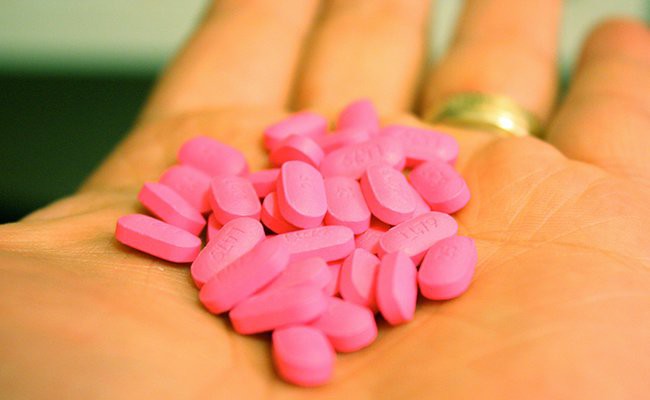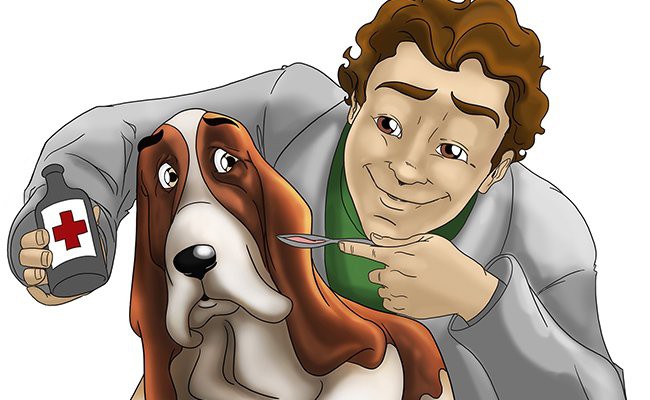- Benadryl Ingredients
- How Benadryl Actually Work?
- Benefits Of Administering Benadryl For Dogs
- Main Side-Effects Of Benadryl In Dogs
- Most Common Benadryl Drug Side Effects
- Most Rare Benadryl Drug Side Effects
- Overdose Of Benadryl
- When To Enquire About Benadryl With Your Vet?
- Recommended Dog Benadryl Dosage Chart
- How To Determine Whether Benadryl Is Safe And Secure For Your Dog?
Dog Pregnancy Calculator And Timeline
The urge to reach into the human medicine shelf to treat your dog can turn pretty dangerous. Certain medications are considered safe and secure for dogs if used sensibly.
Moreover, vets recommend Benadryl for dogs to treat motion sickness, travel anxiety, and allergies.
Of course, dogs and humans react quite differently to self-medication, which is precisely why vets advise dog lovers against self-medication.
However, we have presented must-know details about Benadryl for dogs.
Benadryl Ingredients
Benadryl is the market name for the chemical diphenhydramine HCL. Diphenhydramine can be identified as an ethanolamine-derived antihistamine, the first generation, to be precise.
The syrups mostly contain some specified amount of alcohol and glycerol as well. Significantly, this antihistamine crosses the brain-blood barrier while many other active ingredients in many such products can not.
This property of crossing the BBB makes this drug successful. However, like two sides of the coin, the drug’s success comes with delirious side effects.
To sum up, this FDA-unapproved vet drug Benadryl is now used as a medication for both cats and dogs across America.
How Benadryl Actually Work?
In particular, the receptor antagonist, diphenhydramine functions by controlling histamines. Benadryl is used to treat symptoms like hives, sneezing, and itching.
However, the dog’s body responds with the production of Histamine storm as an immune response.
Later stages stop the receptor-antagonists from identifying histamines in the host body, dog in this case. Thus as antihistamines block the effects of histamines released during an immunological response.
Benefits Of Administering Benadryl For Dogs
Antihistamines are used to treat allergies. Benadryl contains more of this and hence is mainly used for
- Treating dogs with minor to middle-level allergies
- Other allergies that are treated with Benadryl are insect and snake bites, environmental allergies, food allergies, and seasonal allergies
- Manages skin allergies and the subsequent itchiness
- Controls other signs of allergies such as
- Anaphylactic reaction
- Sneezing
- Coughing
- Red patch
- Inflammation and swelling
- Runny eyes and nose
- Hives
- Itching
- Alabama Disease
- Vets also suggest Benadryl for treating mast cell tumors
- Stops allergic reactions connected with heartworm treatment
- Finally, Benadryl makes a brilliant case for your dog kit
Main Side-Effects Of Benadryl In Dogs
Benadryl serves as the best healer for allergies in dogs. At times, it is used to treat anxieties, depression, and at times, heartworms too.
Certain major illnesses like Cancer have also been treated with Benadryl as an auxiliary medicine.
However, it would be best if you think twice or better seek Professional vet advice in the following cases of your dog:
- Pregnancy
- Allergic lung disease
- Hypertension
- Seizures
- Bladder neck troubles
- Prostatic hypertrophy
- Severe heart condition
- Angle-closure glaucoma
Most Common Benadryl Drug Side Effects
- Quick or abnormal breathing
- Rapid heartbeat above normal
- Hypersalivation
- Retention of urine in the bladder
- Mouth dryness
- Sedation
Most Rare Benadryl Drug Side Effects
Overdose Of Benadryl
It is very important to follow the Benadryl dose chart before administering the drug to your dogs.
The common signs of Benadryl overdose include
- Seizures
- Constipation
- Agitation
- Dilated pupils
- Abnormal heartbeat rate
If at any point you think that there has been a drug overdosage for your canine companion, please do urge the vet or seek help.
Even if you are unsure about the drug overdosage, do visit the doctor if you see the above-mentioned symptoms in your canine friend.
Please do remember that Benadryl overdosage can be life-threatening if left untreated for dogs.
When To Enquire About Benadryl With Your Vet?
Before enquiring about Benadryl, consult your family vet about these health issues
- Red eyes and itching are severe symptoms.
- For dogs affected by glaucoma, Benadryl can make the condition turn even worse.
- Again, Benadryl does not cure goopy, red eyes.
- In the case of skin diseases, this drug does not produce the desired results.
- Finally, if you treat your dog with Benadryl without informing your doctor, keep your eyes glued to your dog.
Recommended Dog Benadryl Dosage Chart
- Contact your family vet to determine the safe dosage limit for your dog.
- According to the Merck Manual, administering 2 to 4 mg of this drug Benadryl per kg of your pet’s body weight appears safe.
- And also not more than 2 or 3 times daily. But, this dosage depends on your dog’s health condition.
- Avoid using time-release capsules because capsules work differently in dogs and may cause an overdose. Moreover, capsules may break open and might release too much medication.
- However, you can also use an ordinary children’s liquid medication, but it contains sodium and 0% alcohol.
- Kids’ Benadryl tablets or pills are also recommended for small-sized dogs.
Caution: Dosage for capsule Benadryl and liquid Benadryl differs. So, contact your vet and use a correct measurement syringe to administer the drug. It takes a minimum of half an hour to show progress, and hence you plan accordingly.
Never feed pregnant dogs with Benadryl and dogs affected with chronic allergies.
How To Determine Whether Benadryl Is Safe And Secure For Your Dog?
Please remember that Benadryl is virtually safe when all the instructions of your vet are followed. In essence, after medication, you watch your dog for any adverse reactions and contact your vet with any further questions.


























